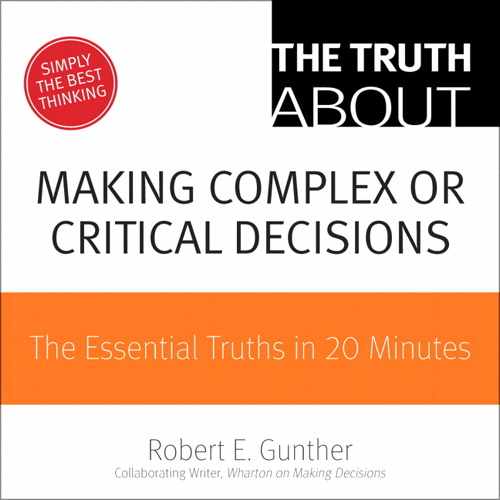TRUTH 6 Decisions are not snapshots but movies
Mark Twain once said, “The art of prophecy is difficult, especially about the future.”
There is never a crystal ball to figure out where each road will lead. A college dropout such as Bill Gates can go on to become one of the richest and most successful businessmen in the world. What parent wouldn’t be concerned about a child dropping out of Harvard? How could Stephen King’s mother know that the clippings she came across in his room about brutal killings were not the beginning of a career of crime but rather the genesis of great thrillers? The end is not always obvious from early decisions.
In considering decisions, we often look at snapshots rather than movies. We look at one decision but, in reality, each decision is part of a whole chain of decisions. Each decision we make today opens up other decisions tomorrow. The decisions snake out like a set of highways.
Sometimes decision makers capture these multistage decisions with formal decision trees, with weights on the different branches. For example, the high school student has to decide whether to finish school. The graduate can then decide to go on to college or go directly to work or military service. The college graduate is then also faced with a fork in the road—pursue an advanced degree to join the workforce or even go traveling or to live on an ashram in India. In moments of decision, we often stand like Robert Frost considering “the road not taken,” but do we carefully think through where each decision will lead?
We can think forward about our decision in three concrete ways. First, we can look at the way our decisions create “options” in the future. There is a whole field of management strategy focused on “real options,” small investments today that create options for the future, similar to financial options. We can do this informally with all our decisions. For each decision, think about the options it creates for the future. How valuable are these options? When can you realize them? What do you need to do next? Think about how you can build decision points into the process so that you revisit the decision.
For example, a student might revisit career plans after every year of schooling. You might use an annual performance review at work to engage in your own review of your career decisions. (Unless you’re hopelessly unromantic, however, do not use your wedding anniversary as an opportunity for a hard look at the relationship!)
Second, identify in advance when you need to pull the plug. There is no shame in making bad decisions. The problem is that we are likely to stick with a bad decision because of “sunk costs” and other factors. I once owned a 2000 Saab 9-5 that I bought when it was about a year old, so we didn’t have a sense of its track record. (We later saw it turn up in a Consumer Reports list of worst used cars to buy.) Everything went wrong with this car, from broken seat belts and instrument panels to a door handle that broke off. The “performance” tires failed every time they hit a pothole. Finally, we had to replace a $2,000 computer chip for the braking system. We faced more failures, but we had invested so much that we felt we couldn’t walk away. In the end, one bleak November evening, the catalytic converter caught fire, and we called the fire department. We didn’t give up on the car. It had finally given up on us—in a blaze of glory. We should have walked away long before, but we couldn’t bear to part with our past investments until the fire trucks arrived. This is the sunk cost fallacy, and it is just one of the reasons that it’s hard for us to walk away from bad decisions or kill the ones that aren’t working out. If we had said to ourselves, “If we face a repair above $1,000, that’s it,” we might have been able to walk away. Your past decisions weigh upon your future decisions.
Finally, for any decision, think through the next steps. What opportunities will this decision open in the future? What are the next decisions you’ll be faced with? If you play chess, think about the series of decisions and how they might play out, given the expected moves on the board in reaction to your first move. If you’re a movie buff, figure out what story you’re in and where it might lead (of course, remembering that life rarely turns out the way it does in the movies). Where is the story headed and how could it turn out differently?
